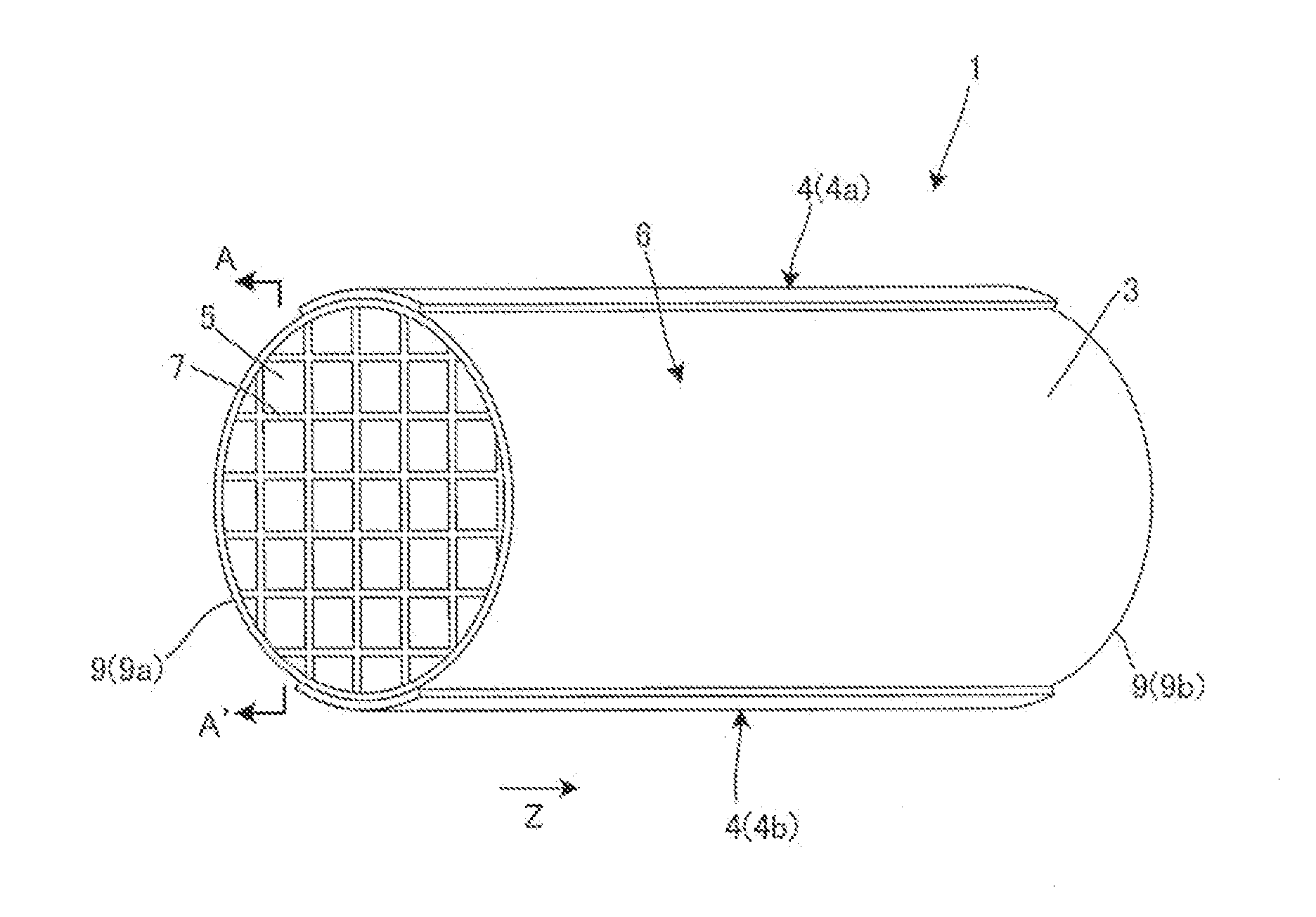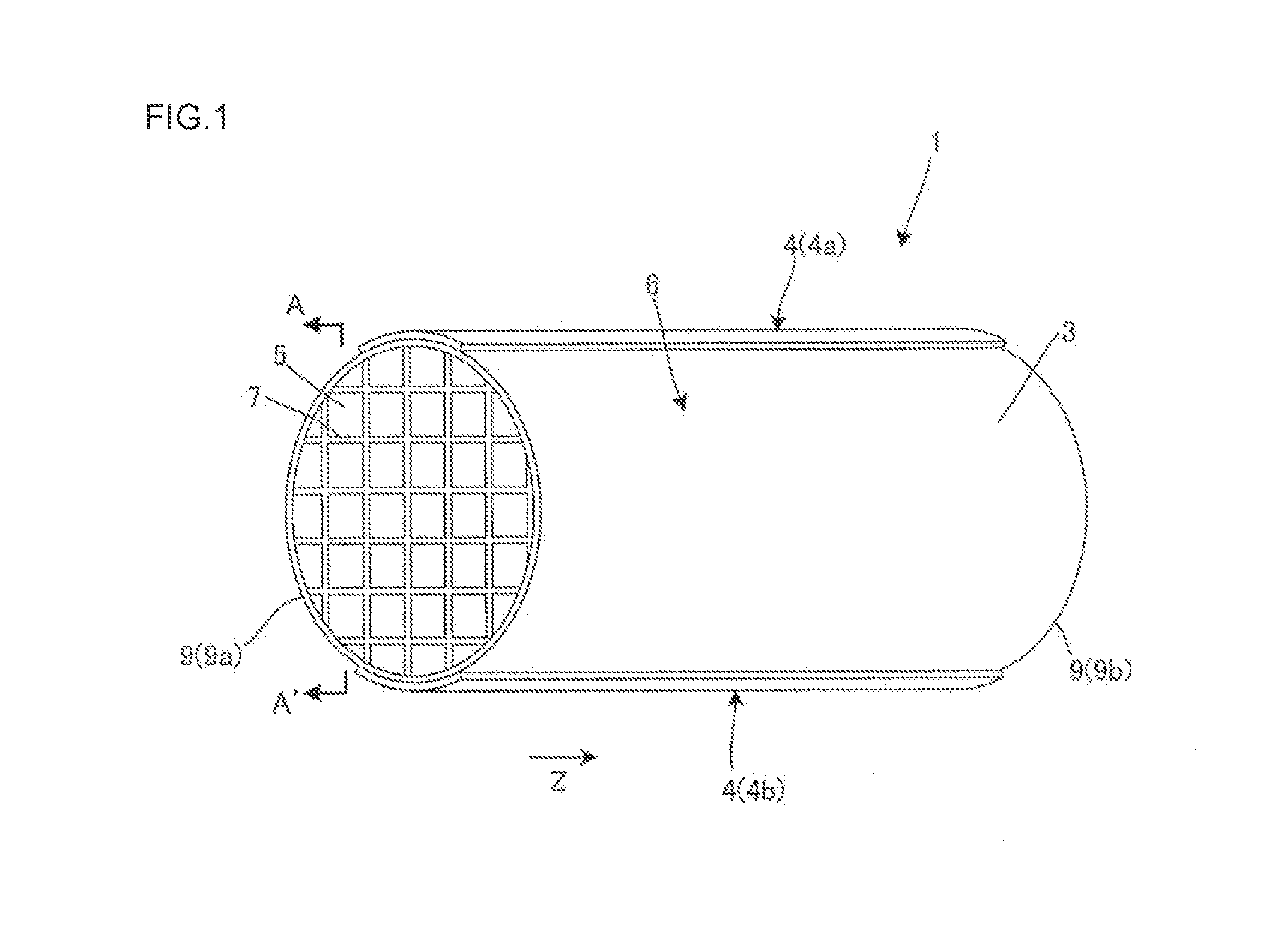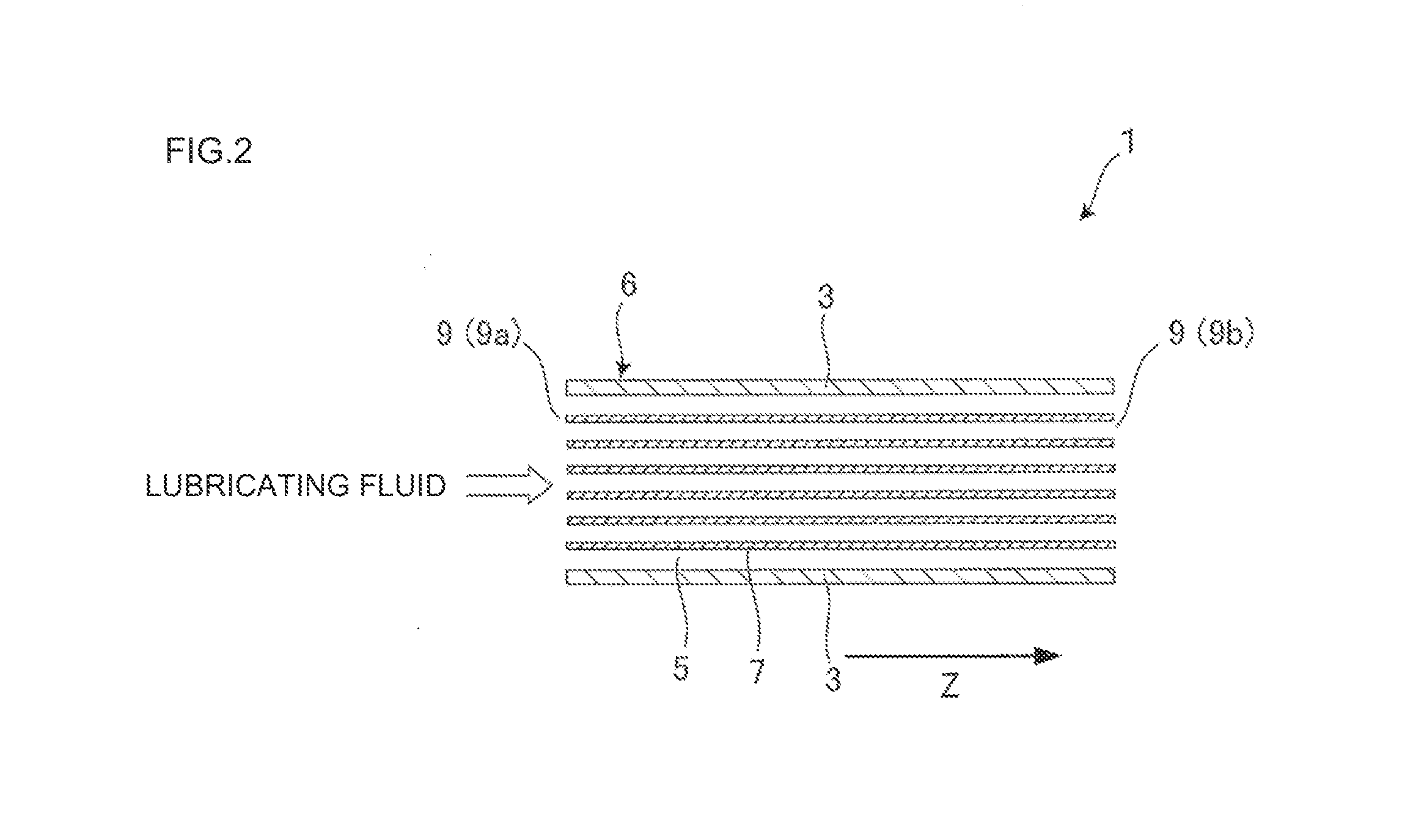Heater
- Summary
- Abstract
- Description
- Claims
- Application Information
AI Technical Summary
Benefits of technology
Problems solved by technology
Method used
Image
Examples
example 1
[0112]First, a honeycomb structure section content Si-bonded SiC as a main component was prepared. Specifically, SiC powder, metal Si powder, water and an organic binder were mixed and kneaded to prepare a kneaded material. Next, this kneaded material was formed in a honeycomb shape to prepare a honeycomb formed body. Next, the obtained honeycomb formed body was sintered in an inert gas atmosphere, to prepare the honeycomb structure section containing Si-bonded SiC as the main component.
[0113]Next, the side surface of the honeycomb structure section was coated with a silver (Ag) paste as an electrode forming raw material. Two portions of the side surface of the honeycomb structure section were coated with the electrode forming raw material. A shape of each coating film was a rectangular shape (a strip-like shape). Then, in a cross section orthogonal to an extending direction of cells, one of the two “coating films by the electrode forming raw material” was disposed on a side opposit...
examples 2 to 12 and 55 to 58
[0119]Heaters were prepared in the same manner as in Example 1 except that conditions of a honeycomb shape were changed as shown in Table 1 and materials for use were changed as follows. The prepared heaters were subjected to “an electrical conduction test” in the same manner as in Example 1. The results are shown in Tables 1 and 2.
examples 13 to 18 , 59 and 60
Examples 13 to 18, 59 and 60
[0120]First, a honeycomb structure section containing Si-impregnated SiC as a main component was prepared. Specifically, SiC powder, an organic binder and water were mixed and kneaded to prepare a kneaded material. Next, this kneaded material was formed in a predetermined honeycomb shape shown in Table 1 or 2 to prepare a formed body. Next, on the obtained formed body, a lump of metal Si was mounted, and impregnated with Si in a reduced pressure argon (Ar) gas. Thus, the honeycomb structure section containing Si-impregnated SiC as a main component was prepared. Next, a coating film was formed in the same manner as in Example 1, to form a pair of electrodes on the side surface of the honeycomb structure section. In this way, heaters each including the honeycomb structure section and the pair of electrodes were prepared.
[0121]Next, the prepared heaters were subjected to “an electrical conduction test” in the same manner as in Example 1. The results are show...
PUM
 Login to View More
Login to View More Abstract
Description
Claims
Application Information
 Login to View More
Login to View More - R&D
- Intellectual Property
- Life Sciences
- Materials
- Tech Scout
- Unparalleled Data Quality
- Higher Quality Content
- 60% Fewer Hallucinations
Browse by: Latest US Patents, China's latest patents, Technical Efficacy Thesaurus, Application Domain, Technology Topic, Popular Technical Reports.
© 2025 PatSnap. All rights reserved.Legal|Privacy policy|Modern Slavery Act Transparency Statement|Sitemap|About US| Contact US: help@patsnap.com



